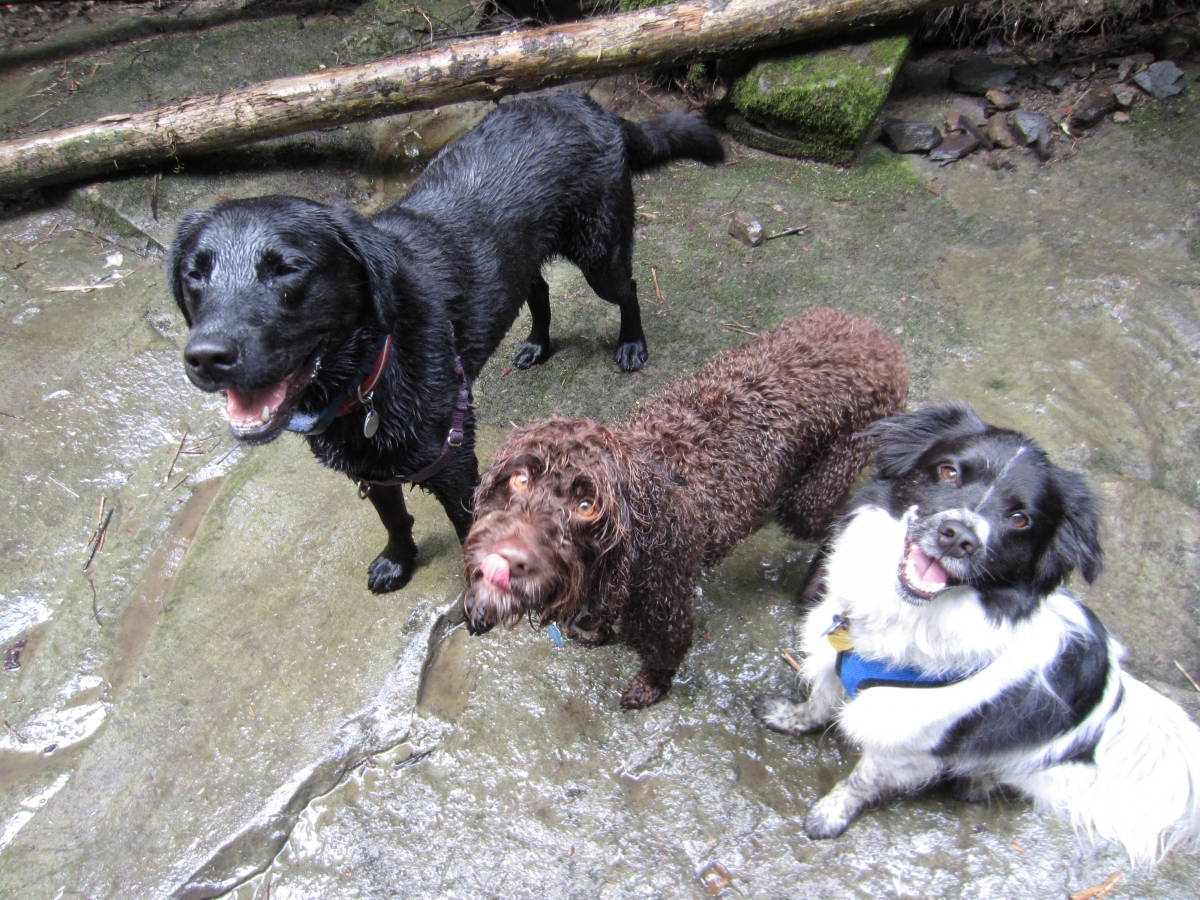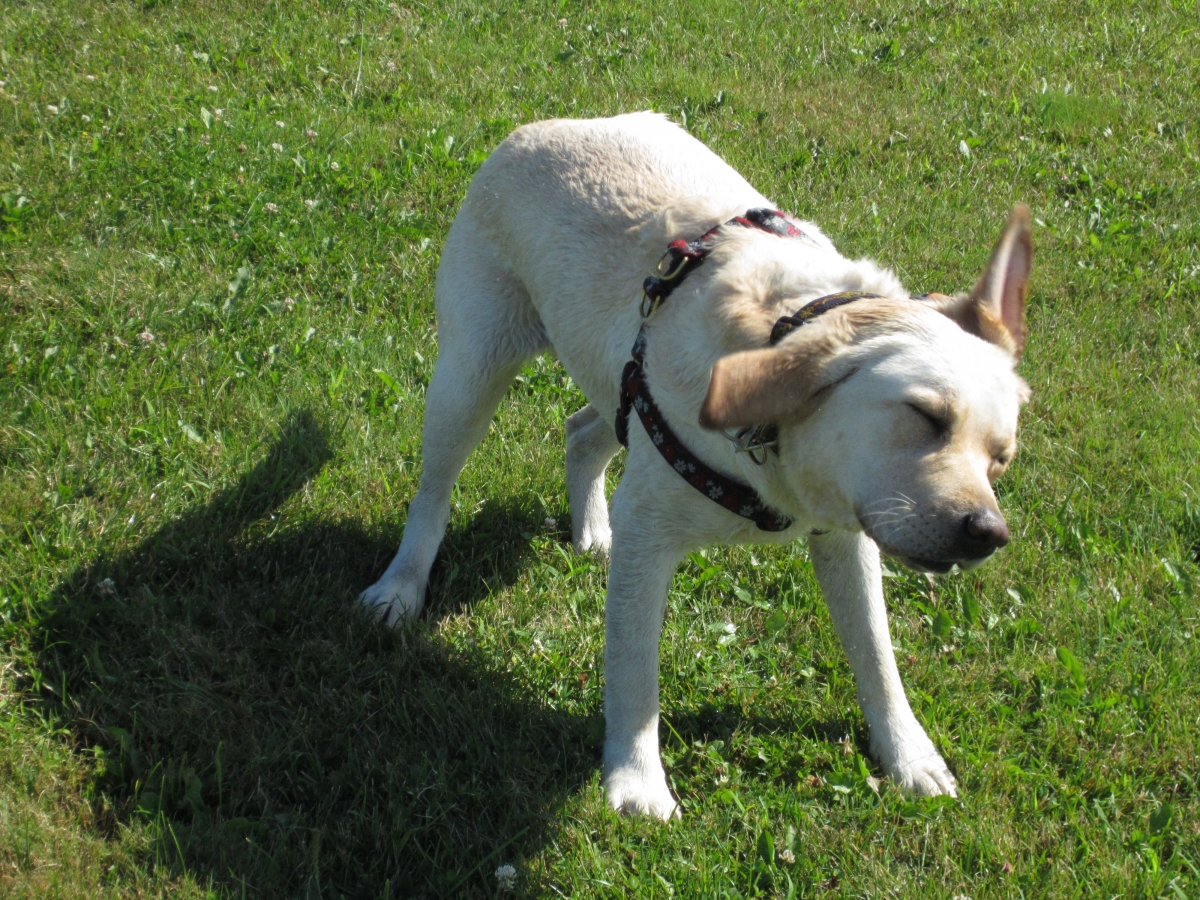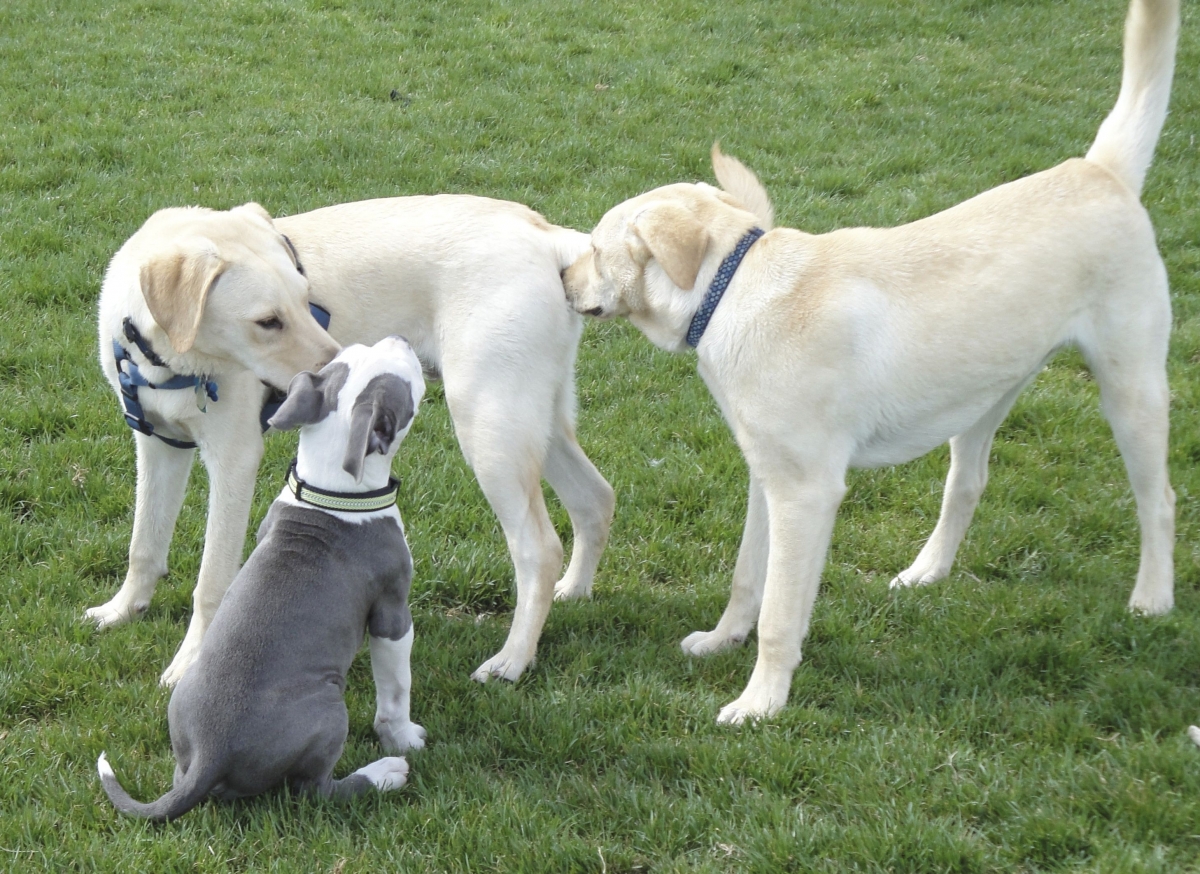 By Elsa Larsen, Dog Behaviorist & Trainer, Owner My Wonderful Dog
By Elsa Larsen, Dog Behaviorist & Trainer, Owner My Wonderful Dog
If a young puppy feels overwhelmed and threatened in a social situation, he may respond with threats of his own. Ifthese threats are heeded, the young pup will add this successful approach to his repertoire. Thereafter, each time he is faced with a social situation that feels uncomfortable or dangerous, he will reach into his toolbox of behaviors and pull out any behavior that may have resolved conflict in the past. He will offer up each one of these behaviors until he finds one that works. If the more socially acceptable behaviors go ignored and aggressive behavior works, that may become the behavior that the puppy defaults to. This is why it is so important that both the owner of the puppy and the owners of the dogs that may interact with this pup be aware of any signs of conflict or discomfort and intervene when things start to get out of hand. The language of dogs is rich and filled with nuance. A flick of an ear, the carriage of the tail is an indicator of your dog’s inner emotional state. The eyes, the ears, the mouth, the tail and even the hair on your dog’s back can give you clues as to how your dog may be feeling in any given situation. Generally speaking, what you are looking for in your dog is floppy and loose. The more stiff your dog appears the more likely it is that trouble is brewing. Not always of course, but dogs who aggress almost always stare and tense up before they erupt.
Take a look at your dogs’ ears--are they twitchy and moving or are they pinned back. Ears that are twitchy and moving can indicate a curious or friendly dog, while ears that are pinned, often indicate a worried or fearful animal.
How about your dogs’ tail? Most often, the higher the tail carriage, the more aroused the dog is. Arousal simply means the dog is over stimulated. Arousal can happen during play but can also be a precursor to aggressive behavior. A tucked tail indicates a dog that is clearly uncomfortable or frightened. A happy dog will most often carry his tail (if he has one, that is) mid-height. He may wave it from side to side like a flag or whip it around in a circle like a helicopter. A dog with his tail held high and stiff may be indicating that he feels uncomfortable with others approaching.
The various parts of your dog’s body work together to tell a story. While looking at individual parts of the dog may be helpful, reading the dog as a whole will paint a more complete picture. Study photographs, watch videos and observe dogs to hone your skills. It’s important that we become more skilled at interpreting what our dogs are trying to tell us. The more we understand our dogs, the more likely we will be able to keep them safe—we owe them that.
|
|
|
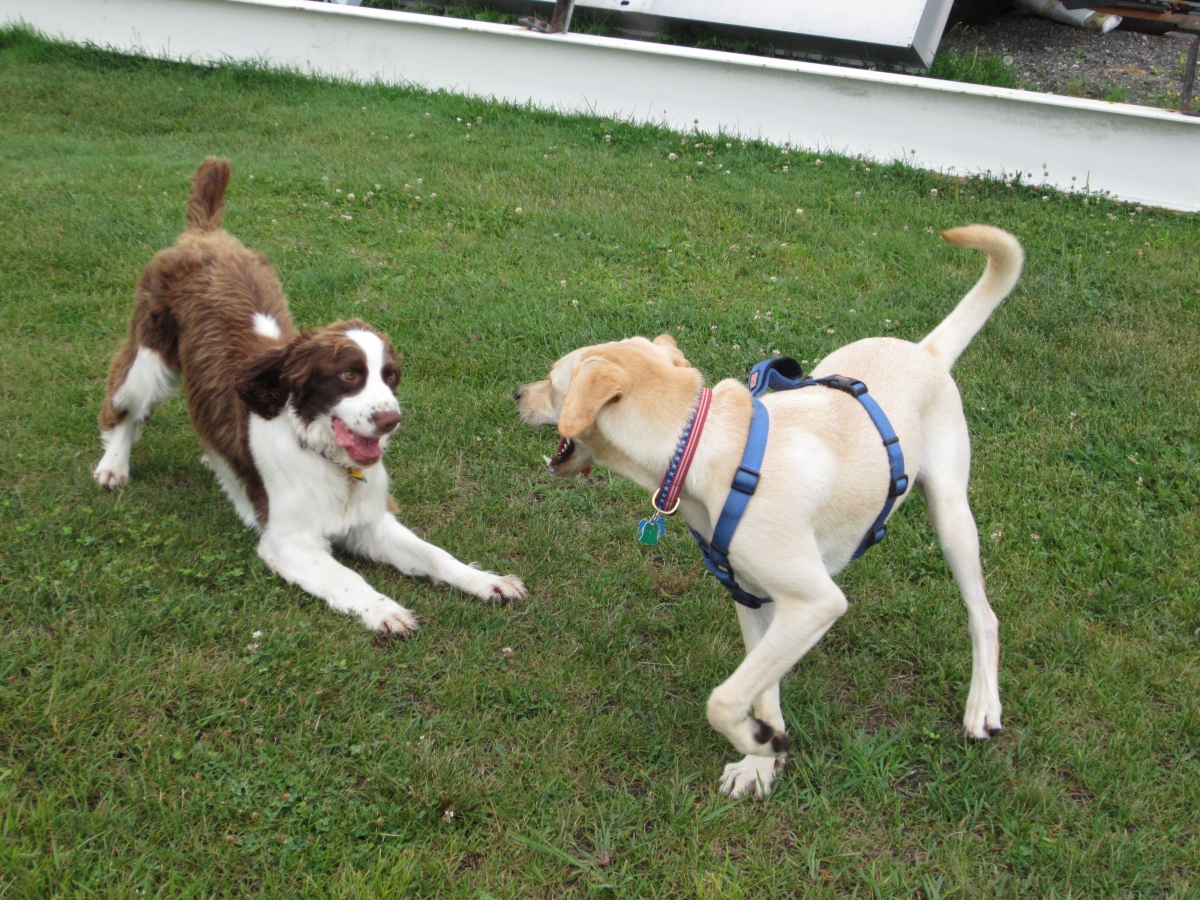 Moses invites Tucker to play with a bow. Tucker lifts his paw in deference. |
 Patrick looks a little worried—his ears are pinned and he is giving a tongue flick. |
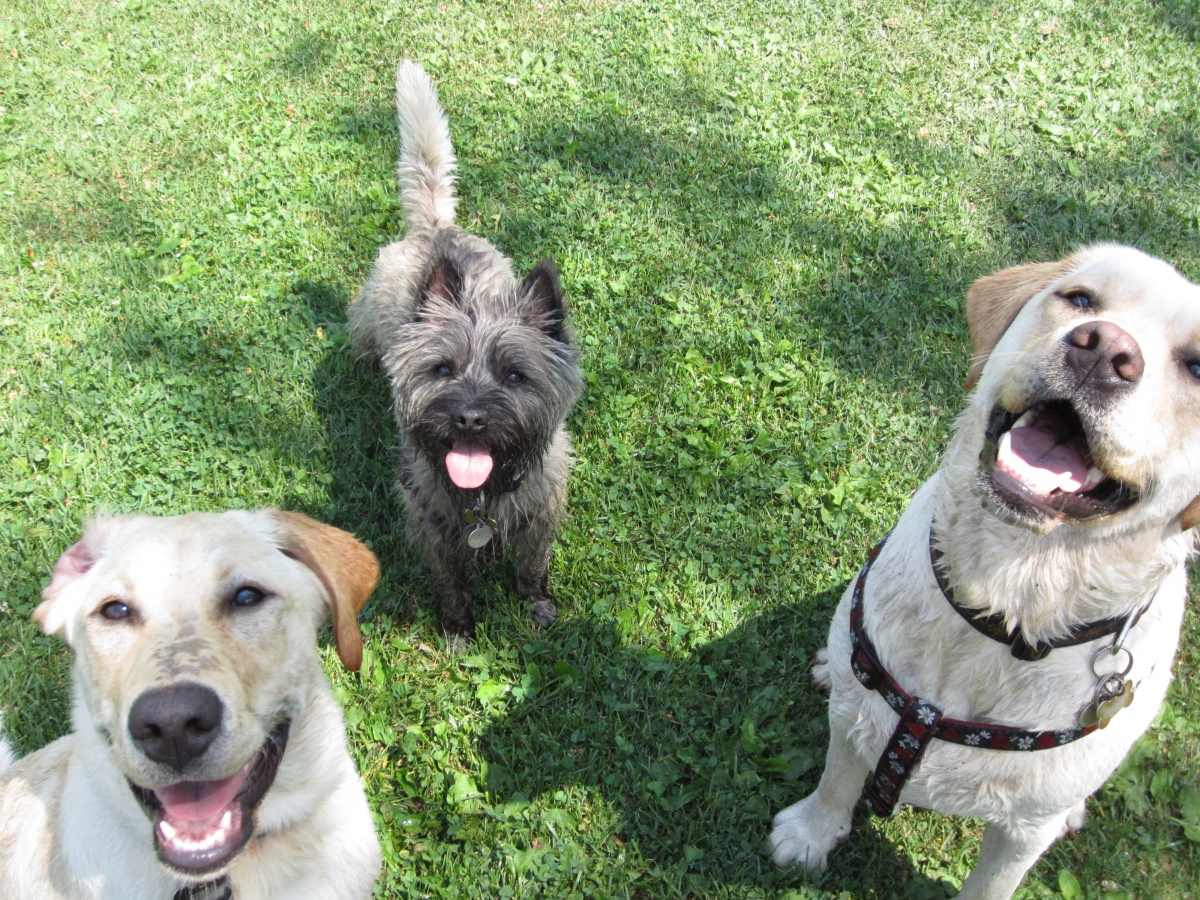 Happy dogs with smiling faces. Wide open mouths, round eyes, lolling tongue. |
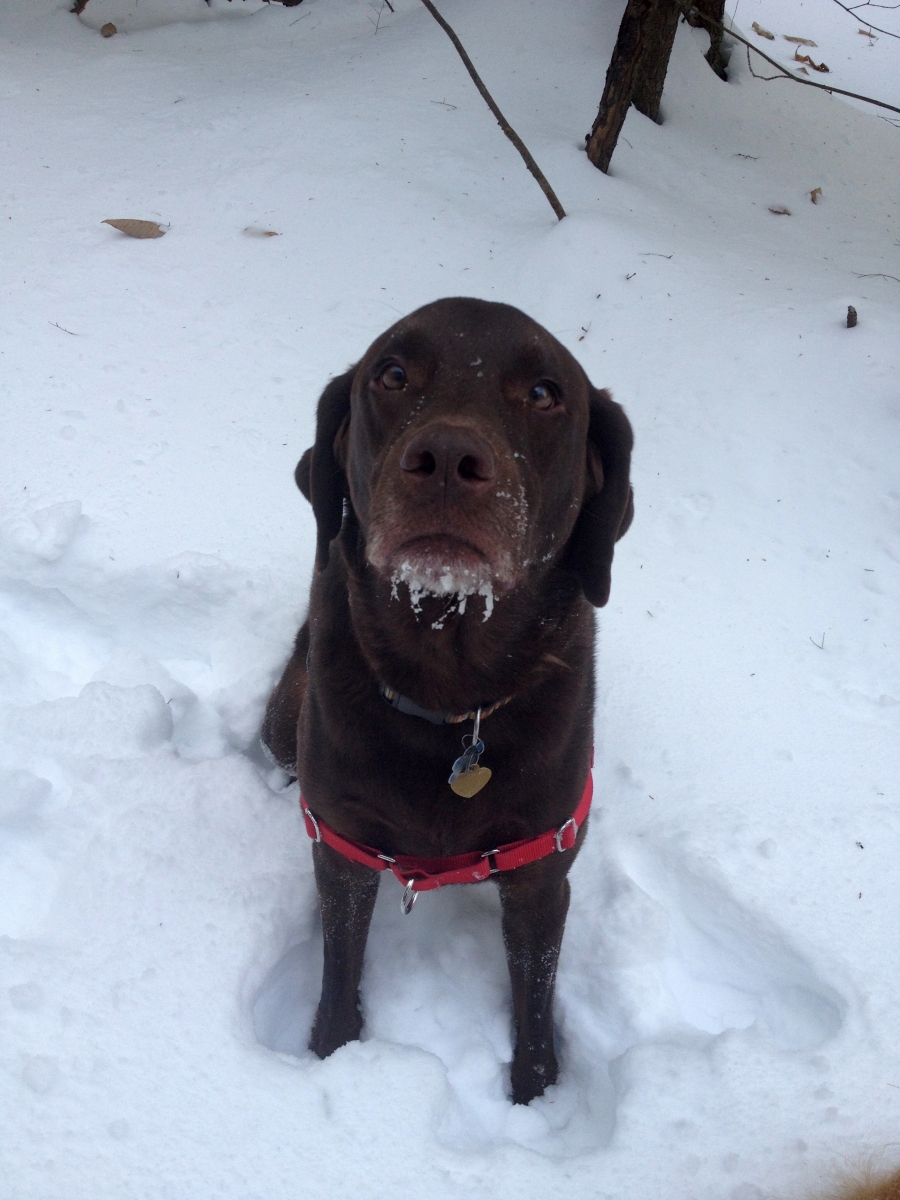 Worried Henry-ears pinned back, mouth tight. |
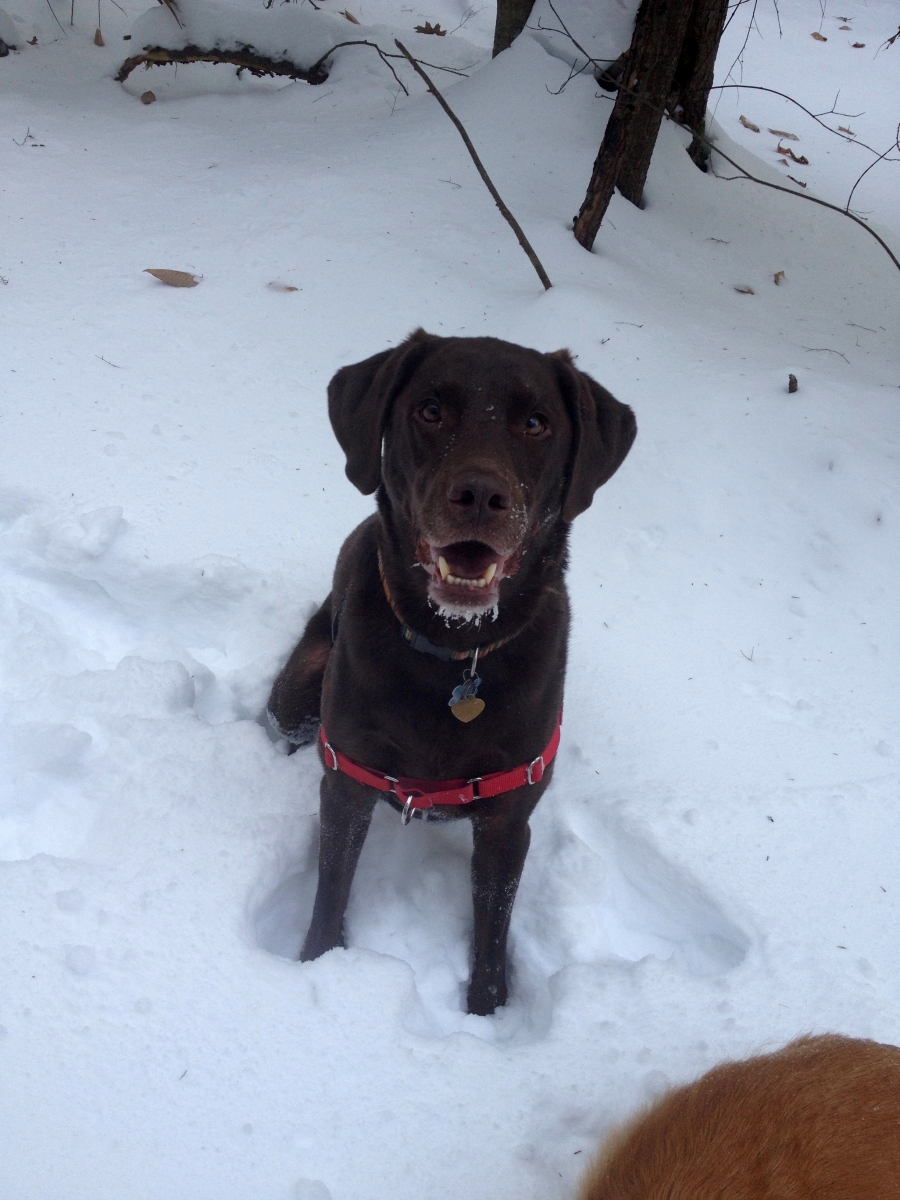 Happy Henry-ears forward, mouth open and relaxed. |
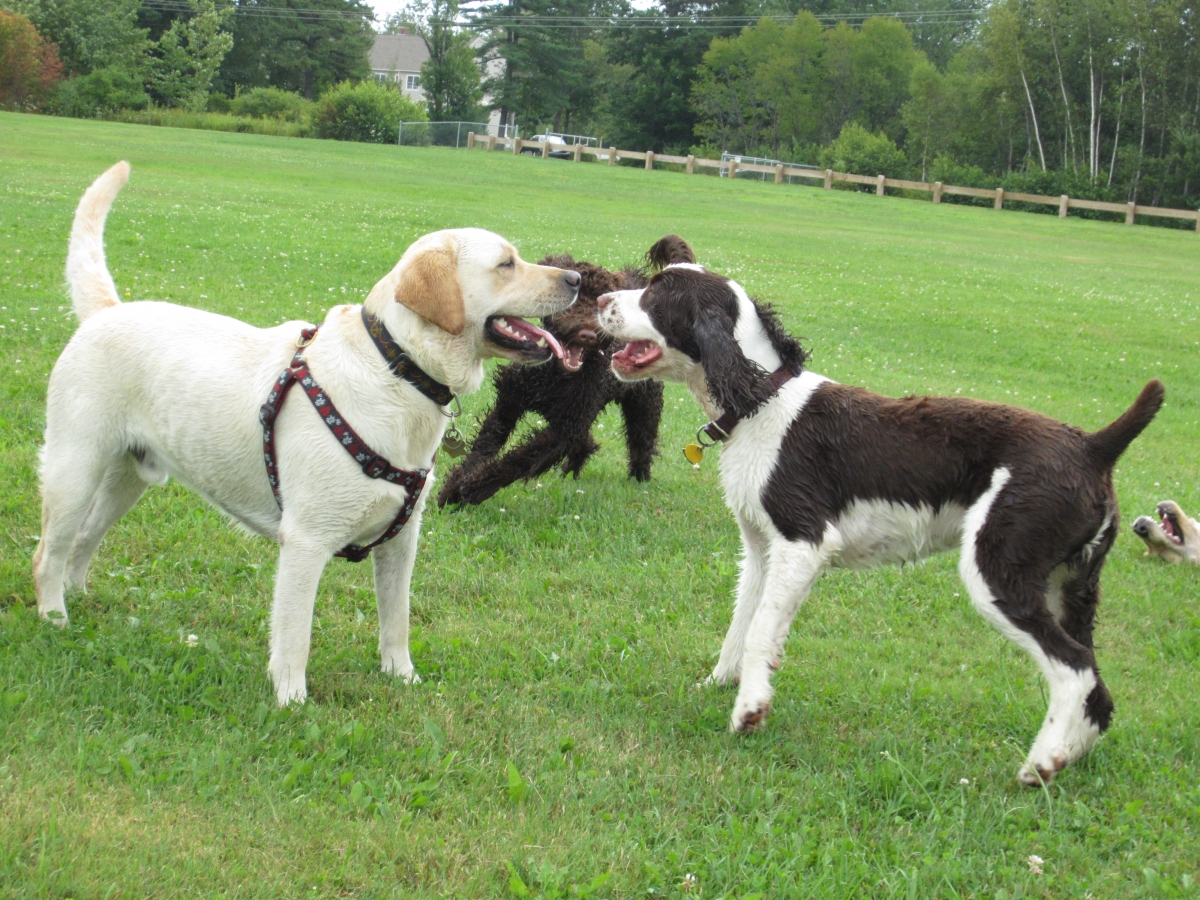 Both these dogs have friendly, squinty eyes and loose open mouths. Moses is also offering a paw lift. The tail carriage for both dogs is high because they have both been engaged in some rambunctious wrestling. |
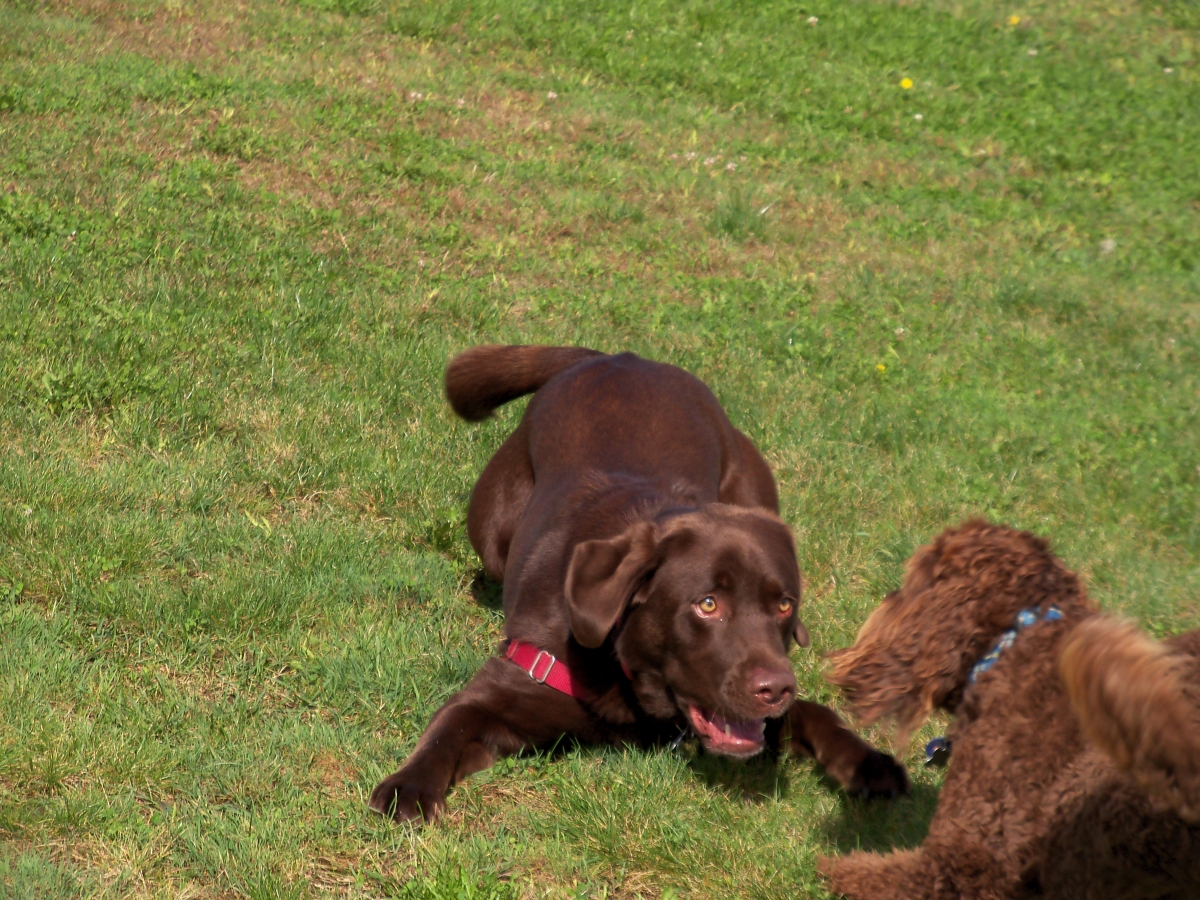 Bunson gives Toby a stare and a play bow to indicate he wants a game of chase. |
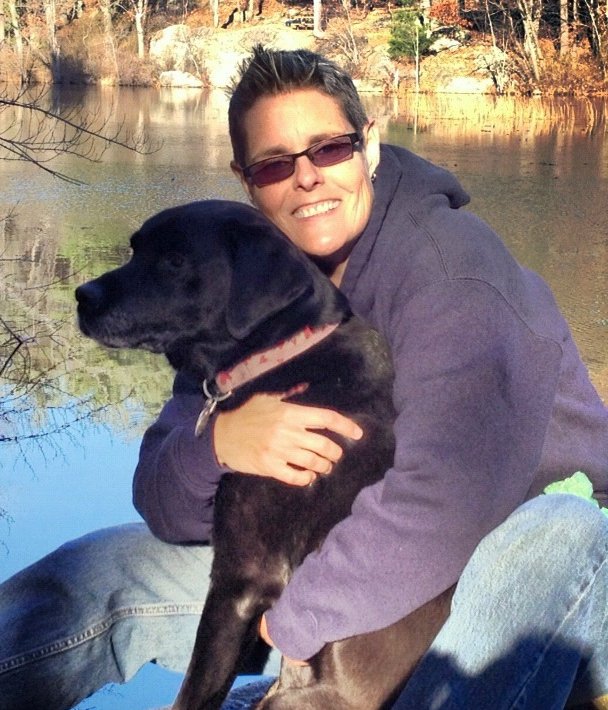 About Elsa Larsen:
About Elsa Larsen:
Elsa started her dog training career as a volunteer for an organization in Santa Rosa, California that trained dogs for people with disabilities. In June 2000, Elsa moved to the east coast and created My Wonderful Dog, a non profit that that engaged at risk youth in the care and training of service dogs. Sadly, the non profit had to close its doors in 2008 due to lack of funding, but under the original banner of My Wonderful Dog, Elsa continues to bring her expertise and knowledge to bear in her quest to create harmony between pet dogs and their owners in and around Portland, Maine and the greater Boston area. With over 15 years experience, Elsa has had the pleasure of working with hundreds of dogs on issues as diverse as dog aggression to puppy management and care.
To follow Elsa and My Wonderful Dog on Facebook, click here.
